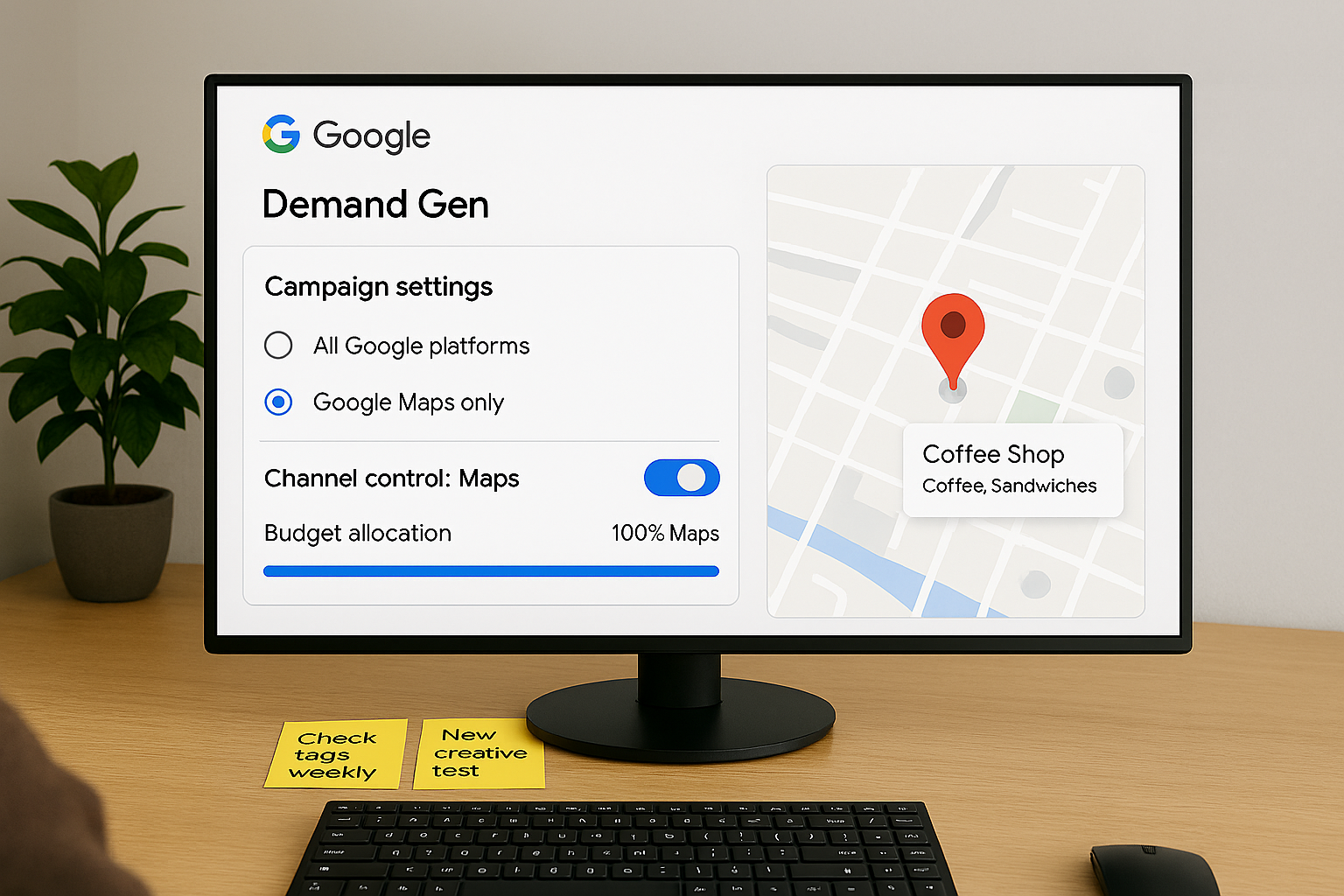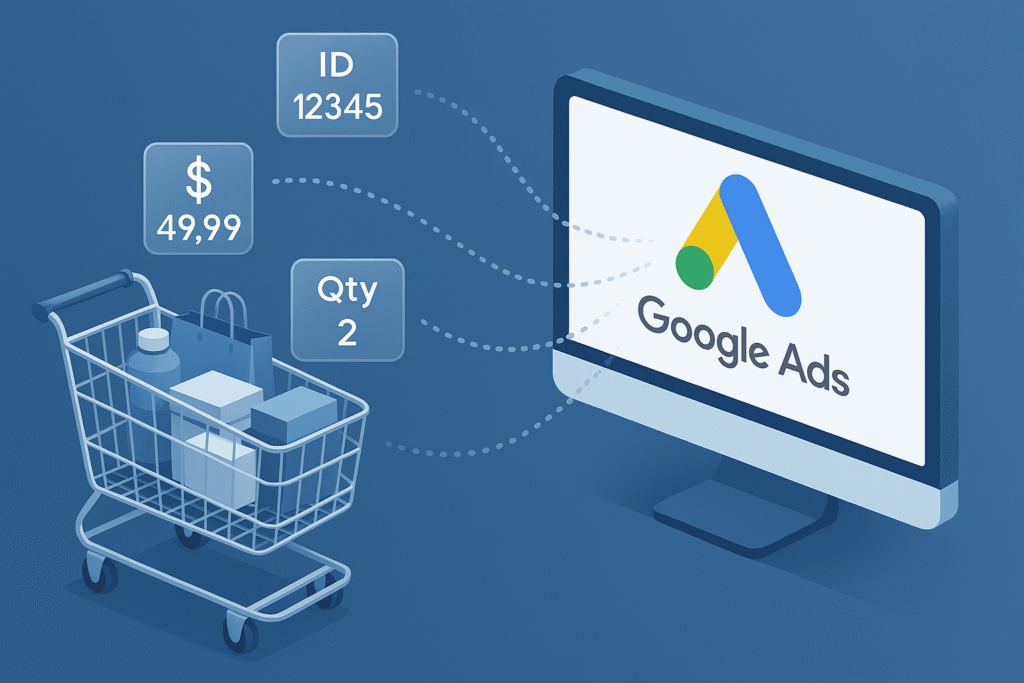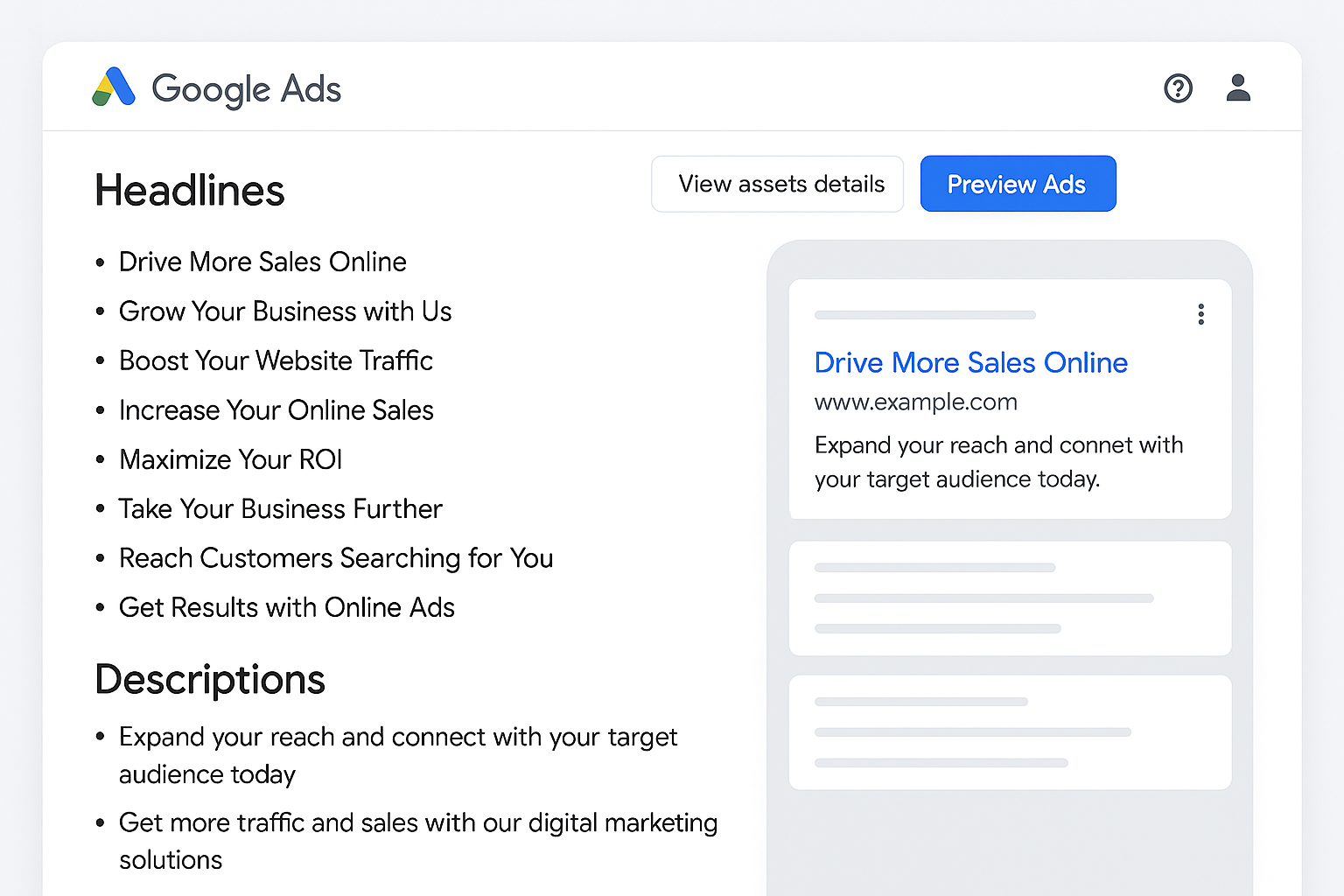Google Ads has rolled out a new beta feature that gives advertisers unprecedented control over where their Demand Gen campaigns appear, Maps-only targeting. Until now, advertisers could only get placement on Google Maps through Performance Max campaigns, with no way to allocate budget exclusively to Maps. This change means businesses can now target customers in a highly location-specific way, without competing placements on Search, YouTube, or Display.
This beta is currently limited to promoted pins on Google Maps, but it opens the door to more granular location-based advertising opportunities that could significantly benefit local and brick-and-mortar businesses. Discover the trends shaping Instagram Reels in 2025 for maximum reach.
The Problem With the Old Approach
Before this beta, Google Maps advertising had a major limitation: if you wanted your ads to appear there, you had to run Performance Max campaigns. Performance Max is known for its broad reach, placing ads across Google Search, Display, YouTube, Discover, Gmail, and Maps. While this is useful for brand visibility, it also meant advertisers had no control over how much of their budget went specifically toward Maps placements.
For local-first businesses, this was frustrating. If you wanted your ads to appear for people actively navigating near your store, you still had to pay for impressions on unrelated channels like YouTube or Display. Even with placement reporting, there was no way to isolate spend on Maps without waste.
The new beta solves this by making Maps a standalone channel within Demand Gen campaigns.
How Maps-Only Targeting Works in Demand Gen
According to Google Ads product updates, this beta introduces channel control that lets you select Google Maps as your exclusive ad placement within Demand Gen. The feature is still in testing, so availability is limited to certain advertisers who have been invited to join.

Right now, only promoted pins are supported. Promoted pins are location markers that appear directly on the map for users searching nearby businesses. For example, if someone searches “coffee near me” while in Google Maps, your café could appear as a promoted pin with your name, rating, hours, and a direct link for directions.
Promoted pins are powerful because they reach high-intent users, people who are literally navigating through an area and looking for a business to visit.
Google has hinted that this beta could eventually include Map Pack placements (the list of local business results that appears in Google Search above organic results), but that’s not yet available. Understand the power of Italian influencer marketing in today’s digital world.
Why This Matters for Local Businesses
This feature could be a game-changer for brick-and-mortar businesses, franchises, and service providers. With Maps-only targeting, your ad dollars are spent entirely on people near your business or actively searching for services in your area.
Here’s why that’s important:
- Hyperlocal Intent – Users on Google Maps aren’t casually browsing; they’re usually looking for somewhere to go right now.
- Reduced Budget Waste – No more paying for impressions on unrelated channels.
- Higher Conversion Potential – If a user is already nearby, the friction between seeing your ad and visiting your location is minimal.
- Brand Visibility on the Move – Many searches happen while people are en route, making it easier to capture foot traffic.
Comparison: Performance Max vs. Demand Gen Maps-Only Targeting
| Feature | Performance Max | Demand Gen (Maps-Only Beta) |
| Channel Control | No (all Google channels included) | Yes (Google Maps only) |
| Placement Types | Search, Display, YouTube, Maps, etc. | Maps promoted pins only |
| Budget Allocation | Spread across all channels | 100% to Maps |
| Ideal Use Case | Broad campaign goals | Hyperlocal conversions |
| Reporting Precision | Lower for Maps-only insights | Fully Maps-focused |
For advertisers who already run Performance Max and see strong results from Maps, the new beta allows budget isolation, making your campaigns more efficient.
How to Prepare for Maps-Only Campaigns
Even if you’re not yet part of the beta, you can take steps now to get ready for when it becomes widely available.
1. Optimize Your Google Business Profile (GBP)
Promoted pins pull information directly from your GBP. Ensure your profile has:
- Accurate hours and location
- High-quality images of your storefront and products
- A detailed description of your services
- Updated reviews and active responses
2. Analyze Current Maps Traffic
Look at your Performance Max placement reports (or location reports in Search campaigns) to estimate how much traffic you currently get from Maps. This gives you a baseline for measuring the beta’s potential.
3. Prepare Localized Creative
Maps ads work best with local relevance. Instead of generic offers, promote neighborhood-specific events, deals, or seasonal items that appeal to your area’s audience.
4. Train for Quick Conversion
Because Maps users are often ready to take immediate action, ensure your in-store or on-site experience is fast and welcoming. This might mean better signage, streamlined checkout, or staff training for walk-in inquiries. Master your Instagram post format strategy for better engagement.
Potential Use Cases
This feature isn’t just for coffee shops and restaurants. Here are some industries that could benefit:
- Retail Stores – Clothing, electronics, or specialty goods looking to increase walk-ins.
- Service Businesses – Salons, auto repair, pet grooming.
- Healthcare Providers – Urgent care, dental offices, pharmacies.
- Real Estate Agents – Open houses and office visits.
- Event Venues – Local concerts, markets, or fairs.
Possible Limitations and Challenges
While the beta is exciting, it’s not without limitations:
- Promoted Pins Only – For now, you can’t run display-style creatives or Map Pack ads.
- Availability – Only available to invited accounts in the beta phase.
- Competition for Prime Locations – In high-density areas, bidding wars could drive up costs.
- Measurement Nuances – Foot traffic attribution can still be tricky without integrated offline tracking.
Still, even with these limitations, the control offered by Maps-only targeting is a step forward for local marketing strategy.
Looking Ahead: What Could Come Next
If Google expands this beta, we could see:
- Map Pack Inclusion – Letting advertisers appear in the top local results in Search with paid placement.
- Multi-Format Ads on Maps – Incorporating image or video elements directly into map results.
- Dynamic Offer Integration – Showing real-time promotions tied to store inventory.
- Improved Foot Traffic Measurement – Enhanced reporting to connect ad impressions to physical visits.
These developments would further strengthen Maps as a competitive advertising channel.
How to Access the Beta
Google hasn’t opened public sign-ups yet. If you’re interested, you can:
- Contact your Google Ads account representative to request access.
- Join relevant Google Ads beta programs and mailing lists.
- Monitor updates in the Google Ads Help Center and industry blogs.
Being proactive can put you ahead of competitors once the feature rolls out more broadly.
Bottom Line
The introduction of Maps-only targeting in Demand Gen campaigns is a significant shift in Google Ads’ local marketing capabilities. For the first time, advertisers can dedicate their entire budget to capturing high-intent, location-based traffic without spreading spend across unrelated channels.
If you run a business that relies on foot traffic, you should be preparing now, optimizing your Google Business Profile, tailoring hyperlocal offers, and monitoring your current Maps traffic. Once this beta becomes widely available, those who are ready will be able to capture more conversions, reduce wasted spend, and outpace competitors who are still treating Google Maps as an afterthought. See why this modern tool for business success is a must-have in 2025.





